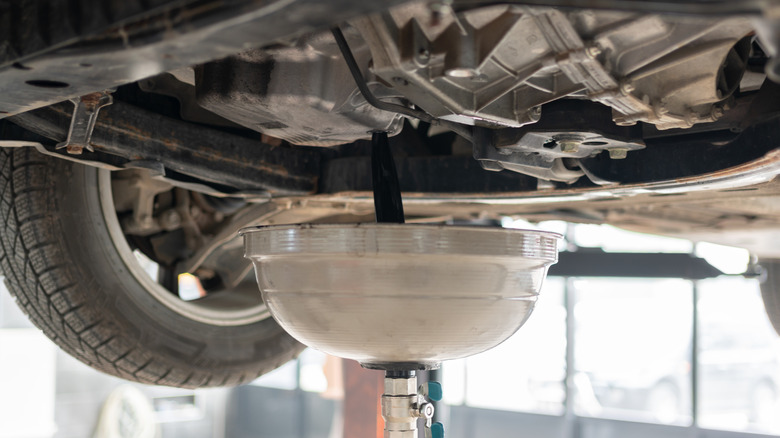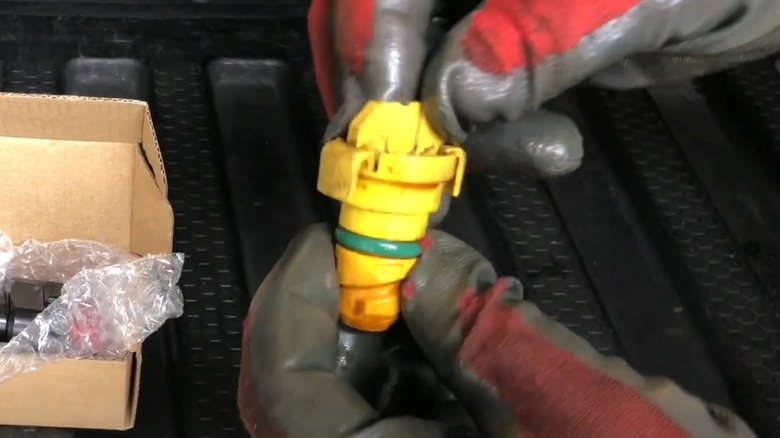When (And Why) Did Carmakers Switch To Single-Use Oil Drain Plugs?
Across the board, there are a few maintenance tasks that are incredibly simple on most vehicles. Swapping out windshield wiper blades, replacing the cabin air filter, and even repairing small cracks or chips in the windshield can all get done pretty quickly. While a bit more labor-intensive, replacing the oil in your vehicle all by yourself is also a relatively straightforward task. It more or less boils down to removing the drain plug, draining the old oil, and replacing it with a fresh batch. With that said, there is some nuance, specifically when it comes to the vehicle in question and the nature of its drain plug.
For decades, oil pan drain plugs on all vehicles were reusable. Remove it, drain your oil, put it back on, and refill. However, modern vehicles — in this case, those made after the first decade of the 2000s — have switched over to single-use drain plugs. They need to be replaced after every oil change, and that's because of the drain pan they're attached to. Since the start of the 21st century, plastic drain pans have become increasingly common over metal ones. Instead of producing plastic pans with metal plugs, the entire system was produced in plastic for the sake of compatibility. The plugs became single-use to ensure a strong seal and prevent leaks over time. Thus reusable metal plugs became a thing of the past.
Though companies surely benefit from the cheaper manufacturing of plastic parts over metal ones, single-use oil drain plugs aren't perfect. They come with some major drawbacks that can't be ignored.
The problems with single-use oil drain plugs
In replacing the multi-use drain plug system, single-use plastic drain plugs have brought in their own host of issues. For one, there's the matter of plastic waste. Since these need to be replaced after each oil change, as small and overlookable as they may seem, they do create an excess of plastic waste. This wasn't an issue with the older style, since metal oil pans and drain plugs could stick around in useable shape a lot longer before ending up discarded. On top of that, when these drain plugs are in use, they can create serious headaches for mechanics and issues for drivers fresh out of the shop after an oil change.
On the mechanic's end, plastic drain plugs can be a source of frustration. While it's nice that they don't require any tools like a more traditional drain plug, their plastic nature makes them fragile. The tabs needed to lock the plug into place are easily broken, both during the removal of old plugs and the installation of fresh ones. Even with intact tabs, overtightening can lead to oil leakage, with the O-ring either pinched too hard or torn. This isn't to say that old metal plugs weren't prone to leakage or were impossible to remove and reinstall incorrectly, but with plastic ones being considerably more fragile, the odds of improper installation and sudden leaks are heightened.
If you change your own oil, there are several car types to avoid. If you don't want to replace your drain plug after every oil change, keeping away from those with single-use plastic ones is undoubtedly in your best interest.

